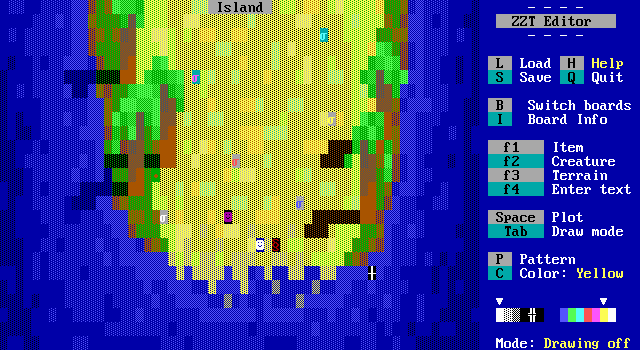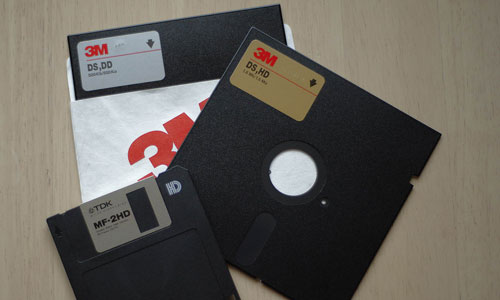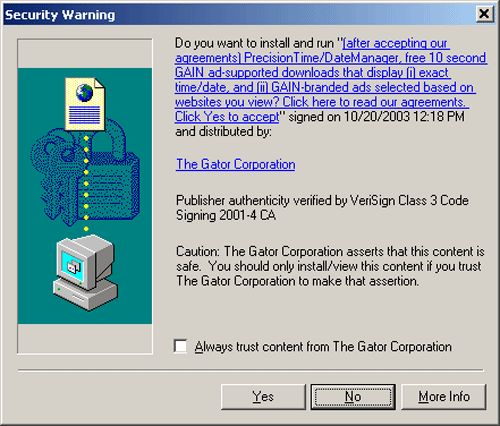The Original In-App Purchase
It wasn't just about games. In the '80s and '90s, shareware democratized the way computer software was sold. Unfortunately, adware sort of dimmed its charm.
"You're probably used to buying an expensive, commercially marketed program, taking it home and hoping it does the job. All too often, though, you find it falls short of your expectations. The shareware way lets you choose from a wide variety of high quality programs and try them all until you find the one you like best. Then and only then do you pay a low registration fee to the program author."
— An explanation of value of shareware in the introductory catalog for The Software Labs, a shareware-by-mail distributor. The fairly slick 1992 catalog, which can be viewed in all its wonderful glory on the Internet Archive (warning: large PDF file, but worth it; for those who want something smaller, I uploaded a trimmed-down version here), features a massive number of games, education apps, and graphics programs. On the other hand, it has just seven business apps—which should give you an idea of the overall balance of what kinds of developers were making shareware. Such catalogs were common in the early '90s, during a period when people who didn't have modems had to acquire software in meatspace.

(ZZT screenshot)
Five notable pieces of shareware that redefined computing
- PKZIP: This compression utility, created by developer Phil Katz in the late '80s, compressed files so efficiently that it became a de facto standard that's used to this day. Katz, who created this app after a legal battle over the similar .arc format, smartly made the .zip format open, only charging for his implementation of the format. He had a hit on his hands. But Katz's life, as we highlighted last year, wasn't so easy. He died in 2000.
- McAfee Antivirus: Before John McAfee became the subject of, shall we say, interesting headlines, he innovated in the antivirus market by becoming the first person to offer such tools under a shareware license. The result was so effective that the software quickly caught up to its largest competitor, Symantec's Norton Antivirus—especially after he helped create a media frenzy around the Michelangelo virus.
- Wolfenstein 3D: Clearly, id Software's Doom and Quake (and Duke Nukem 3D, released by Apogee/3D Realms) followed in its footsteps, but the drip-out strategy of this famous game—which innovated at a level that topped many shrink-wrapped games of the era—proved to skeptical gamers that shareware was definitely not a second-class product. Doom is arguably seen as a more influential piece of software, but Wolf3D proved out the model.
- ZZT: The first game released by Epic Megagames is in some ways pretty much the opposite of what the firm, now known as Epic Games, is known for. (That is, the myriad versions of the Unreal Engine.) But in other ways, it makes a lot of sense. The game, which is completely built using ANSI graphics, stood out among game fans because of its built-in editing tools—which in many ways defined the company's future approach. Like Wolfenstein 3D, the success of this game set the stage for one of the defining game companies of the 21st century.
- Trumpet Winsock: For years, Microsoft had a blind spot toward the internet, but shareware filled the gap on Windows 3.0 and 3.1. In particular, this shareware implementation of the Windows Sockets API became a must-have for many users who wanted to try out early graphical web browsers like Mosaic and Netscape. Microsoft eventually figured out it needed a version of this and indirectly made of a whole lot of money from it. Alas, Trumpet Winsock creator Peter Tattam received very little in profits from his widely distributed software.

Three guys, three apps, one great idea: The story of shareware's creation
As a concept, shareware can be credited to three separate people, all of whom offered up different elements of the software offering that eventually became shareware.
In 1982, a computer developer and magazine editor named Andrew Fluegelman came out with a piece of communications software called PC-Talk, an early app that he offered up under a model he called freeware—a term he copyrighted, but has little in common with the free-for-the-taking modern definition of freeware. The software could be shared freely, but he requested that, if you liked it, you mail him $25—something he claimed was more economics than altruism. PC-Talk earned a rave review in PC Magazine, Fluegelman's employer at the time, own its own merit.
"An ingenious communications program composed by PC Associate Editor Andrew Fluegelman that is elegantly written, executes without quirk or mishap, and is free for the asking," columnist Larry Magid wrote.
Around the same time, an IBM employee named Jim Knopf (also known as Jim Button) developed a database app, sold under a similar model, called Easy-File. Soon, Knopf and Fluegelman met one another in person, and apparently out of solidarity for their collective models, Knopf renamed his database app to PC-File, and got the ball rolling on his company Buttonware.
In an essay on the creation of shareware, Knopf noted that the innovative sales strategy led to natural attention for his firm.
"Here was a radical new marketing idea, and the computer magazines were hungry for such things to write about," he explained. "The result: much free publicity for PC-File."
The next year, a Microsoft employee named Bob Wallace left that company and created a new one, QuickSoft, for which his first app was called PC-Write. Wallace, who helped other early software-makers with marketing, was ultimately the one who came up with the memorable name for the marketing strategy: Shareware. (It was certainly better than the alternative Knopf came up with, "user-supported software.")
The strategy quickly caught on, and other indie developers followed suit. Computer clubs around the country, wanting to offer their members new software, took advantage of the perks of shareware, which drove its growth.
As a result of all this growth, shareware eventually got organized. In April 1987, the Association of Shareware Professionals formed with the goal of ensuring that the distribution of such software was safe and that the rights of software makers were protected. The organization verified sources that distributed such software and created standards that independent software sellers could follow so they wouldn't get burned. If you ever run into a file called FILE_ID.DIZ in an zip file somewhere, you can credit ASP for putting it there—it's a text file describing what the shareware does.
Shareware, clearly, was an idea with legs—and those legs, ultimately, outran the three men who invented it. Wallace died in 2002, Knopf in 2013, and Fluegelman, most tragically of all, in 1985. The legacy of their work, in many ways, lives on.
"I have never been as socially involved, as interconnected with as many different kinds of people, as when I started getting involved with computers."
— A quote from a recorded interview with Andrew Fluegelman, as cited by Infoworld contributor Kevin Strehlo in a memorial piece about the developer and magazine editor upon his 1985 disappearance. Fluegelman's legacy, as highlighted in this clip, looms large on early computing: Beyond being an inventor of shareware, he was the founding editor of PC World and MacWorld. But his health proved troublesome. He had developed cancer and was suffering from colitis at the time of his disappearance. (He has not since been found and is presumed dead.) As a 1985 transmission on the Newsbytes news wire notes, Strehlo departed from the magazine as a result of this piece, because the magazine chose to cut the last few paragraphs of his column, which stated the circumstances of Fluegelman's disappearance and speculated it was a suicide. (Also worth reading is an interview with Fluegelman for the magazine MicroTimes, republished by journalist Harry McCracken on Medium.)

How adware bastardized shareware's good name
Shareware wasn't perfect as a business model—clearly, more people used software for free than paid the piper—but, despite Fluegelman's initial claims, it was fairly altruistic. It kept small developers in the game and let computer users try out different kinds of software without spending thousands of bucks at Best Buy.
The problem is, all the altruism that went into the model at its launch didn't follow through to a second generation of developers.
During the early Windows XP years, the model broke down. A few factors were behind this, including the tendency for shareware-distributing websites to be the exact kinds of sites that would distribute downloads with adware—a problem that lingers to this very day.
Sometimes, this adware would take the form of programs like Gator, which claimed to have legitimate uses (it would save passwords for you), but also came with a pop-up ad network. (The company behind Gator denied being adware and changed its name multiple times before its inevitable shutdown.)
But more often, the adware just tagged along like an unwelcome guest, ready to clog up your computer with crap at a moment's notice. Almost as if to reflect this shift in shareware's reputation, the Association of Shareware Professionals changed its name to the Association of Software Professionals in 2010.
"It is no longer necessary to distribute software by sharing floppy disks or to pay with a check in the mail," the association explained in a blog post. "Many consumers, fairly or not, have come to see 'shareware' as short-hand for 'amateurish.'"
Sure, shareware still had its areas of success—Mac-based software developers like Panic and Rogue Amoeba did pretty well building up audiences during this era with software releases that were effectively shareware.
But overall, downloading software became way too much of a minefield for shareware to thrive. It's unfair, but that's what happened. The decline of shareware created an opening for other types of software distribution approaches to thrive, including open-source software, freemium software, and software as a service (SaaS).
And it paved the way for App Store-like approaches, where a gatekeeper plays goalie between you and your digital device, keeping out the extra crap you don't need.
The system isn't perfect, and it's not shareware. But we most certainly wouldn't have gotten to what we have now without the cottage industry that a few creative developers built in the '80s and '90s.
In 1992, the same year that The Software Labs published its immaculate catalog, the Software Publishers Association released a video that was the antithesis of the free-for-all of the world of shareware. "Don't Copy That Floppy" used rap to awkwardly sell kids on the idea that you shouldn't share software.
The video, forgotten in its time, became an eye-rolling classic during an era when millennials wore DARE shirts ironically and couldn't be bothered to tell you what Captain Planet was all about.
Shareware, which had Wolfenstein 3D, Doom, and Commander Keen in its corner, looked a million miles cooler, and it didn't even have to resort to cheesy raps to sell itself.
These days, more than ever, we embrace the underdog software developer. Sites like Product Hunt exist basically to fête the developer who's willing to take a risk on the unknown. It can be challenging to make a living on a big risk, but it's possible.
By throwing out the shrink-wrap and the boxes, shareware created a path for the underdog to thrive. The culture we have around software these days exists because, way back when, we decided to copy that floppy.
And thank God we did, because our software would suck without the underdog.
:format(jpeg)/2017/06/tedium102716.gif)
/2017/06/tedium102716.gif)

/uploads/ernie_crop.jpg)